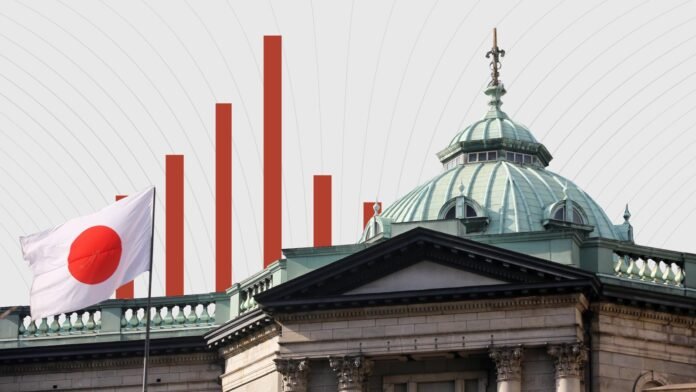Staff Reporter
The Bank of Japan (BOJ) has raised interest rates to their highest point since the 2008 global financial crisis, signaling increased confidence in the economy. On Friday, the central bank revised its inflation forecasts upward, highlighting expectations that rising wages will help maintain inflation around its 2% target.
This marks the BOJ’s first rate hike since July 2022, coinciding with heightened global economic vigilance following the inauguration of U.S. President Donald Trump, who may introduce higher tariffs affecting global markets.
During a press conference, BOJ Governor Kazuo Ueda noted that the weak yen continues to exert upward pressure on import prices, while wage increases are becoming more widespread among Japanese companies.
“We have not preset an idea regarding the timing of the next rate hike,” Ueda stated, emphasizing that decisions will be made based on available data during each meeting.
At the two-day meeting concluding on Friday, the BOJ raised its short-term policy rate from 0.25% to 0.5%. This adjustment, made with an 8-1 vote—board member Toyoaki Nakamura dissenting—reflects the central bank’s commitment to gradually increase interest rates toward a target of around 1%.
Analysts believe this level is ideal for balancing Japan’s economy, avoiding both overheating and stagnation.
This decision is a step away from the deflationary environment and prolonged economic stagnation that have plagued Japan for decades. The BOJ stated, “The likelihood of achieving our outlook has been rising,” as many firms are expected to continue steady wage increases during this year’s annual negotiations.
“Underlying inflation is trending toward the BOJ’s 2% target,” the central bank added, while noting that overall financial markets remain stable.
The Bank of Japan (BOJ) has reaffirmed its commitment to future interest rate hikes, stating it will continue to adjust rates if its economic and price forecasts materialize.
Notably, the central bank removed language emphasizing the need to closely monitor risks related to overseas economies, reflecting confidence that robust U.S. growth will support Japan’s economy—at least for the time being.
In its latest update, the BOJ revised its inflation forecasts upward, indicating that risks to the price outlook are skewed to the upside.
Naka Matsuzawa, chief macro strategist at Nomura Securities in Tokyo, commented, “Their logic remains the same. They are still far away from neutral, so it’s natural to make an adjustment.”
Matsuzawa added, “Unless the BOJ changes the logic of rate hikes or raises the neutral point—which they have been considering at about 1%—there won’t be much room for the market to anticipate further hikes.”
Despite this optimistic outlook, the BOJ faces uncertainties, particularly with ongoing trade tensions and U.S. President Trump advocating for further rate cuts by the U.S. Federal Reserve and similar actions from global central banks.
Following the BOJ’s decision and inflation updates, the yen appreciated approximately 0.5%, reaching 155.32 per dollar, while the yield on two-year Japanese government bonds (JGBs) climbed to 0.705%, the highest level since October 2008.
In its quarterly outlook report, the BOJ projected core inflation to remain at or above its 2% target for three consecutive years. The report also highlighted that risks to the inflation outlook are increasing due to intensifying labor shortages, rising rice prices, and elevated import costs linked to a weak yen.
The BOJ noted, “In this year’s annual wage negotiations, many firms have expressed intentions to continue raising wages steadily,” reinforcing the central bank’s focus on sustainable economic growth.
The head of Japan’s union umbrella group emphasized on Friday that annual pay increases must surpass last year’s 5.1% to combat the ongoing decline in real wages.
This call comes as the Bank of Japan (BOJ) projects core consumer inflation to rise to 2.4% in fiscal 2025, before tapering to 2.0% in 2026. In its previous forecast from October, the BOJ had anticipated inflation rates of 1.9% for both fiscal years.
The central bank maintained its growth projections, expecting Japan’s economy to expand by 1.1% in fiscal 2025 and 1.0% in 2026. While the U.S. economy remains strong and global financial markets stable, the BOJ must remain cautious about uncertainties surrounding U.S. policy actions.
Matt Simpson, senior market analyst at City Index in Brisbane, remarked, “The hike may have been expected, but for the first time in a long while, there were no significant downgrades to their economic outlook.” He added, “This keeps the door open for another 25 basis points hike by year-end, potentially bringing rates to an impressive 0.75%.”
According to recent data, Japan’s core consumer inflation accelerated to 3.0% in December, marking the fastest annual pace in 16 months. This increase indicates that rising fuel and food prices continue to drive up living costs for households.
Since taking office in April 2023, BOJ Governor Kazuo Ueda has dismantled his predecessor’s aggressive stimulus program and raised short-term interest rates to 0.25% in July.
BOJ policymakers have reiterated their commitment to continue raising rates if Japan can foster a cycle where rising inflation leads to higher wages and increased consumption, allowing companies to pass on elevated costs effectively.

